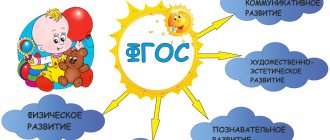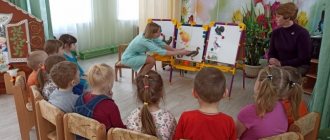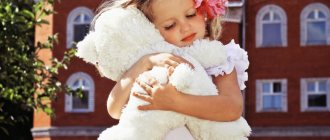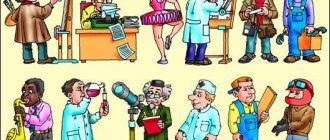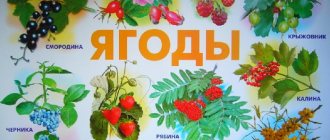Types of transport is a fascinating and interesting topic for almost any little person. By introducing children to this topic, you can classify all vehicles and talk about the purpose of each of them. The task of parents and teaching staff is not only to familiarize themselves with various types of vehicles, but also to consolidate the acquired information through games.
Why do preschoolers need information about transport?
The full development of children can be achieved only by introducing them to the world around them. A child will always be interested in the question of what types of vehicles are there and why do people need them? It is not by chance that preschoolers are introduced to the classification of vehicles. This helps to enrich the vocabulary and consolidate the generic concept of “transport”. At the same time, they achieve the presence of other points:
- The preschooler will learn to compare different types of transport and find some common or distinctive features in them.
- If there is reason, he can unite individual representatives into a single group and somehow classify them.
- You can teach a preschooler the rules of behavior that involve being in one or another type of vehicle.
All this will contribute to the development of personal qualities in the preschooler. This will contribute to the development of thinking, responsibility, and criticality.
We learn the properties of objects - we replenish our vocabulary.
We collect 5-8 cars that are in the house (instead, you can take cards with pictures of cars). We line them up in front of the child. We look at each car, name its qualities (color, size (“big-small”), name the parts of the car - wheel, steering wheel, body, etc.).
If the cars are of different sizes, you can use their example to reinforce the concept of “big-small”: we find large and small cars (say their size), put the big cars separately from the small ones. If there are more types of cars, we also mention this. (There are few large cars, many small ones).
Vehicle classification
The division is based on different principles. This could be a method of transportation or a destination. Depending on the method of transportation, vehicles are divided as follows:
- Ground type, in which the vehicle moves only on the ground or rails. An example would be a locomotive or an entire passenger (freight) train or bus.
- Water transport In this case, movement is carried out by water.
- Aviation mode of transport. Representatives of this category travel by air.
By purpose, transport is divided as follows:
- Passenger view. As the name suggests, it is designed to carry passengers.
- Horse-drawn look. Its main purpose is to transport goods. An example is a barge or an ordinary cart.
- Special transport. It is intended to perform any specific tasks. A striking example of this type is a fire truck.
- Agricultural type of vehicle. These are various tractors and combines designed to cultivate land for agricultural purposes.
Ground transportation, tasks for preschoolers
For movement, representatives of this species have wheels and tracks. They can also move on rails. Various types of vehicles are described to children.
Bus
Designed to transport passengers from one place to any point. The bus follows a specific route and makes stops along the way. Passengers get in and out of them. The same function is observed in the tram, but unlike the bus, it travels on rails. A trolleybus can also carry passengers. But the last two types differ from the bus in that they run on electricity, while the bus runs on gasoline.
Task “Who is the driver”
Train
It can carry passengers as well as cargo. It moves on rails and carries out transportation between cities and villages, sometimes countries.
Fire engine
It is designed to extinguish fires. Such machines are equipped with light and sound signals. They are turned on when the car is going to put out a fire.
Task “Find the odd one out”
Ambulance
It transports sick people. Such machines are equipped with all the necessary equipment and also have signals.
Police car
It is designed to patrol roads and catch criminals. Such cars are equipped with a powerful engine so that they can reach high speed.
Task “Solve the crossword puzzle”
Truck
It is used to transport goods.
There is also underground transport, for example, the metro. In order to use it, you need to go down underground on a special escalator.
Task “Count”
Summary of thematic lesson in the senior group: Transport
Author: Nadezhda Vasilievna Kabanova, physical education instructor at MBDOU kindergarten No. 47 in Novocherkassk.
Description: This material will be useful for teachers and physical education instructors. This thematic lesson is held for older children. Topic: “Transport” Purpose of the lesson : increasing the level of physical fitness of children based on improving motor skills and abilities, and improving motor qualities. ]Objectives:
Educational • To teach the technique of standing long jump.
• Strengthen children's knowledge about the benefits of physical exercise and self-massage. • Exercise in the classification of transport during the outdoor game “Where and how?” • Activate children’s thinking processes in the process of guessing riddles and the “Guess and Show” game. • Practice changing from one column to three - through the center of the hall in threes. • Form proper breathing while walking and running in a circle; • Practice crawling on all fours and rolling the ball with your head. • Form correct posture using exercises from various starting positions (lying on your stomach, sitting on the floor). Developmental • Create conditions for the development of physical qualities (strength, agility) in the process of performing physical exercises. • Develop gross and fine motor skills. Educational • To develop strong-willed qualities in children. • Promote the development of positive forms of communication and friendly relationships with peers. Individual work: During the lesson, taking into account the individual characteristics and level of development of motor skills of children in this group, pay attention to: - breathing technique while running; - on posture; - on the quality of the push (the legs simultaneously push, the arms are brought forward) Venue: sports hall Number of children: 12 people Educational area: physical development Integration with educational areas: cognitive development, socio-communicative development, speech development Methodological support: Penzulaeva L .AND. Physical education in kindergarten. System of work in the senior group. - M.: MOSAIKA-SITNEZ, 2012. “Childhood” Approximate basic general education program for preschool education (authors Babaeva T.I., Gogoberidze A.G., Mikhailova Z.A.), LLC “Publishing House “Childhood-Press” St. St. Petersburg, 2011 Nishcheva N.V. System of correctional work in a speech therapy group for children with general speech underdevelopment. - St. Petersburg: CHILDREN'S PRESS, 2003.-528 p. Internet resource. Methods: - verbal (explanation, artistic expression, questions, riddles that stimulate cognitive activity, explanation); - visual (display, demonstration of subject pictures using ICT,) - playful (outdoor games, play massage, guessing riddles, solving imaginary situations); — practical (performing exercises and practicing motor skills, breathing exercises); — health-saving (changing dynamic poses, hand massage using a massage ball, exercises to develop the muscles responsible for posture, breathing control while running). Materials and equipment: • computer, multimedia equipment; • presentation “Transport” using illustrations of various vehicles; • presentation “Breathing gymnastics “Veterok”” • cards with riddles; • road sign “U-turn” • gymnastic mats; • “collars” • large balls; • massage balls; • car. Preliminary work: • Excursions and observation of transport on the city streets. • Conversations about different types of transport. • Writing stories. • Reading fiction about types of transport. • Examination of illustrations, paintings, photographs. • Creation of a presentation • Selection of audio and video materials; Stages of the lesson: • Introductory part.
• Main part (statement of the problem, completion of tasks, reflection). • Final part Progress of the lesson Children, accompanied by cheerful music, enter the hall and line up. Instructor: Good morning, guys! Can you imagine, a letter arrived at our kindergarten today! (Showing the envelope). From whom do you think? (children's assumption). A portrait of Uncle Styopa appears on the screen
The display of the image is accompanied by an appeal to children.
Uncle Styopa offers to go on a trip to a mysterious country, and which one, the children will learn from the riddle: There is both water and air, The one that moves on land, Carrying cargo and people. What is this? Tell me quickly! (Transport) Of course, to the land of transport! What do you think, what is transport used for? (answers). Of course, transport is needed to move by land, water, air and transport goods and passengers. As we travel through this country, we will transform into various means of transportation. Uncle Styopa invites you to play the game “Guess and Show.” I will ask the riddles that Uncle Styopa sent, and your task is to guess and depict the answer. If you answer correctly, a picture with the correct answer will appear on the screen. Introductory part: Rotate! To the right, behind the guiding step, march. Walking in a column one at a time. While walking, I exercise individual control of posture. (While walking, I ask the children a riddle) 1. What is it - guess it: neither a bus, nor a tram, Doesn’t need gasoline, although the wheels are on rubber?
Walking on toes, arms raised up 2. The canvas, not the track, the horse is not a horse - a centipede. It crawls along that path, carrying the whole convoy alone
Walk with a mincing step, arms bent at the elbows, fists pressed to the chest, while walking, imitate the movement of train wheels with your hands. 3. For him to take you, he won’t ask for oats, feed him gasoline, give him tires for the wheels. And then, raising dust, it will run... (car)
Running in a column one after another Running like a snake (using the “turn around” sign) While running, I carry out individual work on developing breathing techniques. The car drives up a hill and drives in a circle. 4. Walking in a column one at a time. Forming a circle. Are you ready to solve another riddle? Flies like an arrow, buzzes like a bee.
Breathing exercises “Airplane”. Airplane - airplane (the child spreads his arms to the sides, palms up, raises his head, inhales) Takes flight (holds his breath) Zhu-zhu-zhu (makes a turn to the right) Zhu-zhu-zhu (exhales, says zh-zh-zh) I’ll wait and rest (stands up straight, hands down) I’ll fly to the left (raises head, inhale) Zhu-zhu-zhu (makes a turn to the left) Zhu-zhu-zhu (exhale, zh-zh-zh) I’ll stand and rest (stands up straight and lowers hands). Planes to the airfield In a circle behind the guide. Main part: Rearrangement in three columns. Turn around. Instructor: Mysterious adventures continue Here is the next mystery of our game. (As you guess and imitate the movements of the transport, pictures open on the screen..) ORU complex:
1. Here is a steel bird, Aspiring to the skies, And its pilot is leading it. What kind of bird? (airplane)
I.p. legs together, arms to the sides, slightly swaying the body left and right. 2. Without acceleration, it takes off skyward, reminds one of a dragonfly, takes off on a high-speed flight... (helicopter)
I.p. feet shoulder-width apart, arms down, circular movements with arms forward (1-4) – back (5-8). 3. The house floats under the water, brave people live in it. This house can float even under the polar ice. (Submarine)
I.p. lying on your stomach, arms extended forward, legs together. 1-3 raise straight legs and arms at the same time. 4- i.p. Individual work - quality control of execution Why do you think we are doing this exercise? (training the back muscles is correct posture) 4. First they felled the tree, Then they hollowed out its insides, Then they provided it with shovels, And they let it go for a walk along the river. ( Boat)
I.p. sitting on the carpet, legs together, hands on the knees “holding the oars.” 1-2 lean forward, hands reaching towards the feet, 3-4, etc. 5. The giant lifts a lot of cargo to the clouds. Where he stands, then a new house grows. (Crane)
I.p. sitting on the carpet, legs together, hands supported behind. 1-2 raise straight legs and “move the load” to the left, 3-4 do the same to the right. Individual work - quality control of execution What parts of the body work in this exercise? (back, stomach (abs) - these muscles are responsible for correct posture). 6. This horse doesn’t eat oats, instead of legs there are two wheels. Sit on horseback and race on it, but it’s better to steer. (Bike)
I.p.
sitting on the carpet, legs together, hands supported behind. Raise your legs and imitate the movement of riding a bicycle. What muscles work in this exercise? What are strong legs for? (run, jump). I suggest checking to see if your legs have become stronger. We will get on our skis, take our ski poles in our hands and go quickly. 7. Jumping. Circus bicycle I.p. legs together, arms bent at the elbows (holding sticks). Jump the right leg forward, the left leg back, the position of the hands is opposite. On each count, change the position of your arms and legs. Guys, what is needed for a vehicle to work (refuel it, repair it, give it a rest). And our transport needs to be sent for preventive maintenance. Walking in place to restore breathing. Rebuilding in one column. ATS: 1. Standing long jump (frontal)
One, two, three, turn around and turn into a child!
And we turned into children in order to train, learn new movements, and play. Remember which body parts we trained during the warm-up? (back, arms, legs). What are strong legs for? (run, jump). Today we will learn how to properly perform a standing long jump. It is very good that we have prepared the muscles for this exercise. Demonstration and explanation by the instructor of the standing long jump technique (i.e. legs are bent at the width of the feet like a spring, the body is slightly tilted forward, the arms are pulled back, the head is raised. At the same time, the legs are straightened at the knees, the arms are brought forward, a push with both legs, flight, landing on bent legs, arms forward). Execution by children. (3-4 times) Individual work - quality control of execution 2. Throwing the ball up. (frontal)
Guys, Uncle Styopa has prepared another riddle. Light, sonorous and elastic, Round, like a bun. It's a pleasure to spend your free time with him. He jumped and hopped like a bunny. Both the girl and the boy play with him with pleasure. Everyone will immediately guess - Well, of course, it’s... (ball)
What can you do with the ball?
(Throw, hit, roll, throw, throw...) You guessed the next task: we will throw the ball up and catch it. Remind how to hold the ball correctly (from the sides), how to catch the ball (hands grab the ball from the side, do not press it to the chest, throw it straight up), how to complicate this exercise, if it works (perform it with a clap). Well done, I suggest you make your job more difficult. Can you handle it? You said the ball can be rolled? I built a tunnel through which you need to roll the ball in an unusual way - with your head, because... your hands will be busy, you must move on all fours. 3. Crawl under arches on all fours, pushing the ball. (line-by-line)
Formation in a column one at a time, following a guiding step - march.
Take the ball while passing the basket. After distributing the balls, begin the task of throwing the ball up. At the instructor’s signal, the children take turns crawling under the arches on all fours, pushing the ball. You did an excellent job. Outdoor game “Where and how?” Uncle Styopa appears on the screen: How athletic, dexterous, and strong you are! Isn't it time for us to play? What types of transport do you know? (land, water, air). In the hall there are emblems of three elements (water, air, earth), various types of transport will appear on the screen, children, imitating their movements, move from emblem to emblem. Final part: Forming in a circle. Instructor: You trained, played, are a little tired, I suggest you rest a little and get a massage. Sit down on the carpet. (A truck carrying massage balls enters the hall, drives in a circle, children take the balls.) Finger massage “By car” We are driving, driving by car, holding the steering wheel, sitting in the cabin. roll a massage ball between your palms
Two pedals: brake, gas Look after the road.
We squeeze the ball between our palms.
Left, right, left, right. We almost drove into a ditch.
We roll the ball alternately along the left hand, on the right up to the elbow from above and below
Along paths, along small forests, Along ravines and over hummocks,
put the ball on the floor, with our right hand we press the ball and roll it in a circle, change hands and also with our left hand.
We've had fun, slow down, we've arrived!
We transfer the ball from hand to hand, pressing hard. O. Krass Instructor: You studied very well today. What did you like about our mystery adventure? What new words have you learned? And Uncle Styopa has a task for you. We didn't talk about underground transport today. Find riddles, pictures, stories about this type of transport and we will come up with exercises that can be used to depict it.
See you
We recommend watching:
Summary of educational activities in the senior group “Northern Adventures” Summary of a conversation with children of senior preschool age Summary of educational activities in speech therapy for the senior group Methodological development of a summary of an excursion for children of senior preschool age
Similar articles:
Summary of a mathematics lesson in the senior group of kindergarten. Geometric figures
Assignments for mastering the material
When introducing preschoolers to various types of vehicles, various games are used to help them remember them better. They can be represented by the following options:
- Puzzles. They contribute to the development of logic, thinking, and intelligence.
- Outdoor games. Each child is given a picture depicting some type of transport. There is a house where the corresponding transport base is located. The child’s task is to correctly identify it in relation to the type of vehicle depicted in the picture he received.
- Puzzles. This is, for example, a picture of an airplane cut into pieces. The child finds a picture with the required part and talks about what it is intended for.
The information about transport received by a preschooler will contribute to his further development.
